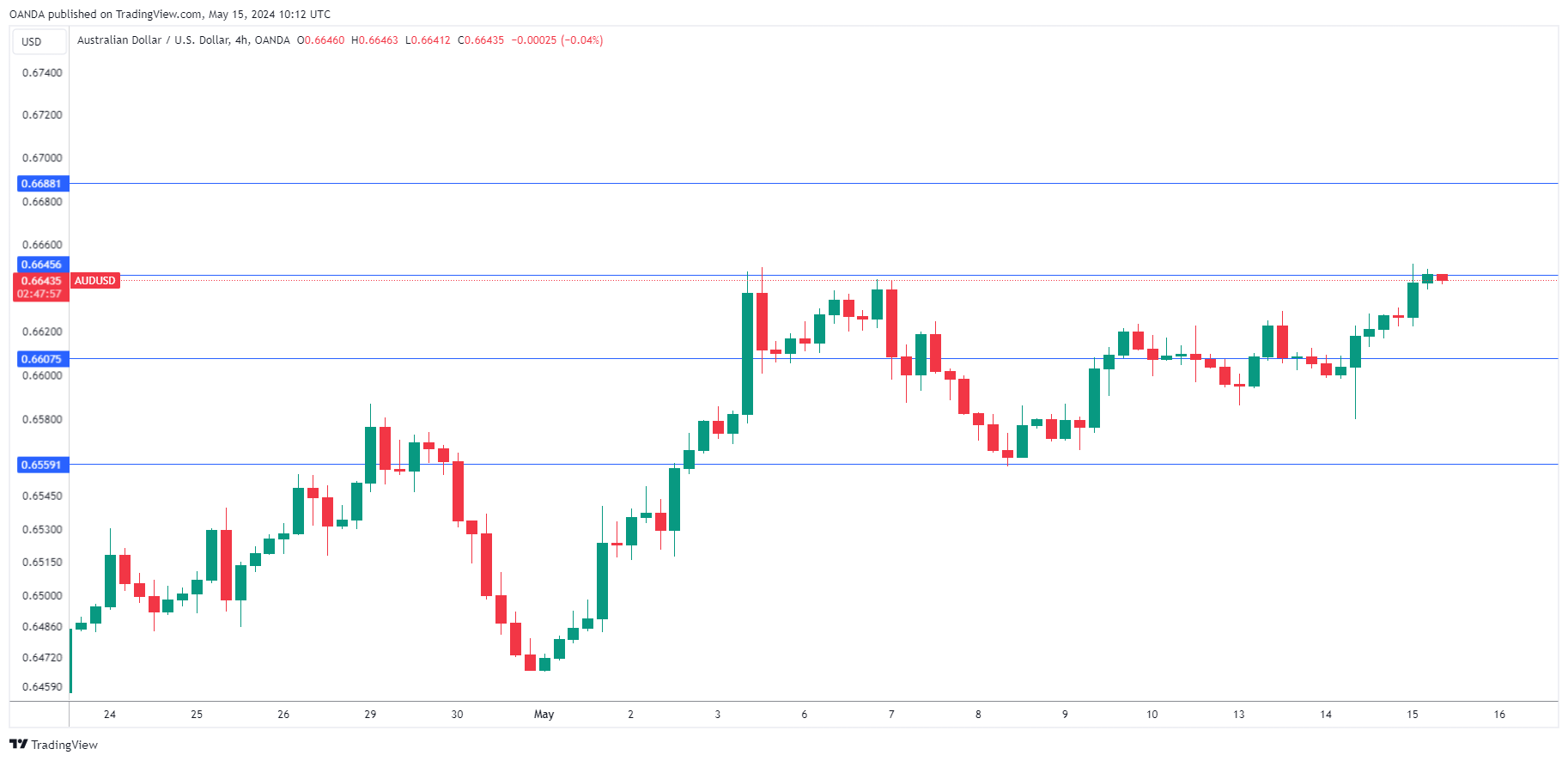The Australian dollar has extended its gains on Wednesday. AUD/USD is up 0.24%, trading at 0.6642 in the European session at the time of writing.
Has Australia’s Wage Growth Peaked?
Australian wages rose less than expected in the first quarter, a sign that inflationary pressures may be easing.
The wage price index rose 0.8% q/q in the first quarter, down from a revised 1% in Q4 2023 and below the market estimate of 0.9%. This is the lowest gain since Q4 2022. On an annualized basis, wages ticked lower to 4.1%, down from 4.2% in the fourth quarter and the market estimate of 4.2%.
The drop in wage growth could be a sign that wage demands have peaked, which would suggest that inflation will ease over the course of the year. The Reserve Bank of Australia has projected that inflation, currently at 3.6%, won’t fall within the 2-3% target band until 2025 and the markets don’t expect a rate cut before this November. Still, these forecasts are sure to change if inflation falls faster than anticipated.
US CPI Next
All eyes are on today’s US CPI report, which could shake up the US dollar. Headline CPI is expected to drop to 3.4% y/y in April, down from 3.5% in March. Monthly, headline CPI is forecast to remain unchanged at 0.4%. Core CPI, which is a better indicator of inflation trends, is expected to ease from 3.8% y/y to 3.6%, and monthly from 0.4% to 0.3%.
Federal Chair Powell said on Tuesday that inflation is falling more slowly than expected and the Fed will remain patient and “let restrictive policy do its work”. Powell’s comments were likely made with the CPI release in mind, as an attempt to quell any market exuberance if the CPI is lower than the estimate. The money markets widely expect the Fed to hold rates at the June meeting, with a rate cut priced at 32% in July and 67% in September, according to the CME FedWatch tool.
AUD/USD Technical
- AUD/USD is testing resistance at 0.6445. Above, there is resistance at 0.6688
- 0.6607 and 0.6559 are the next support levels
